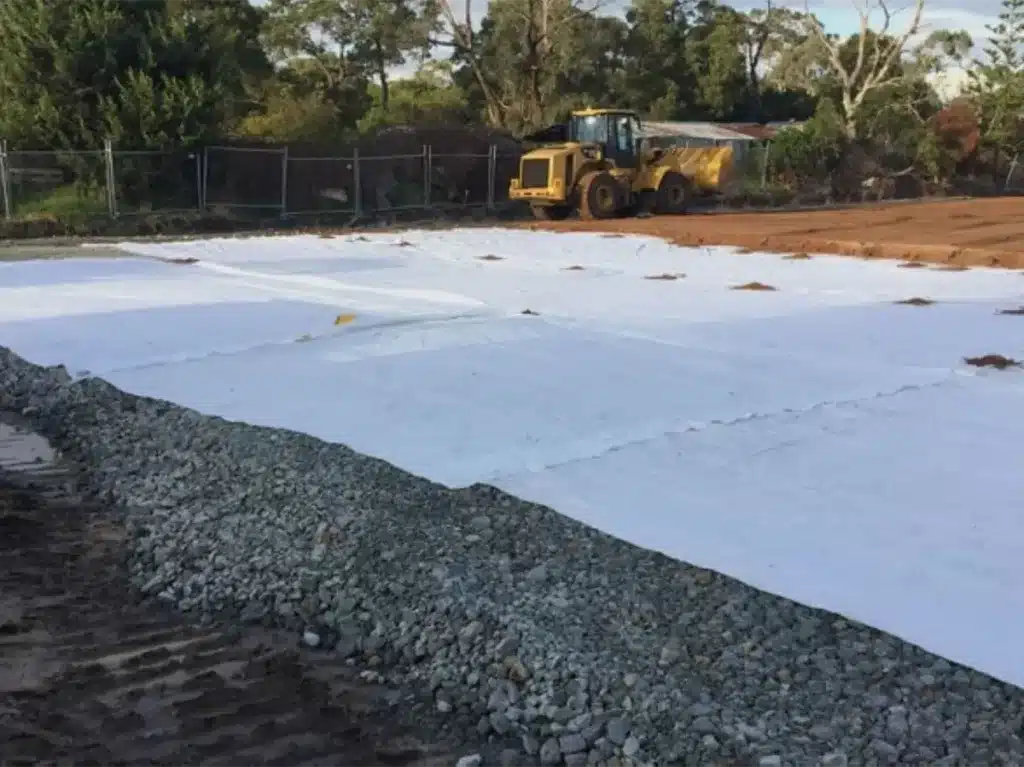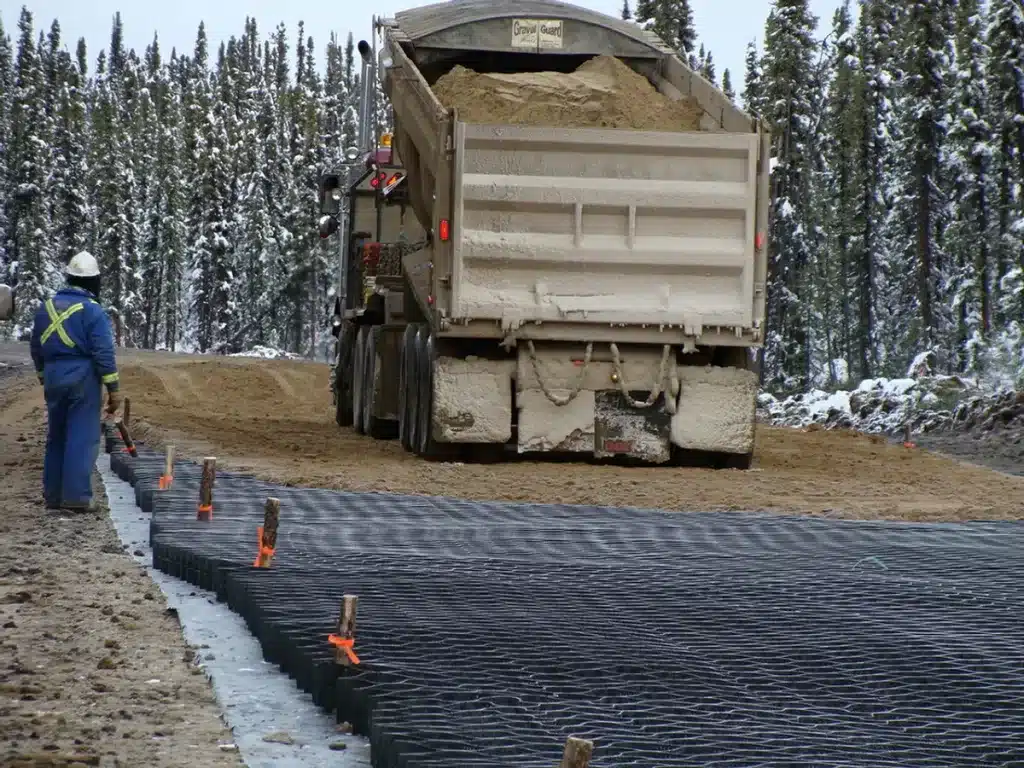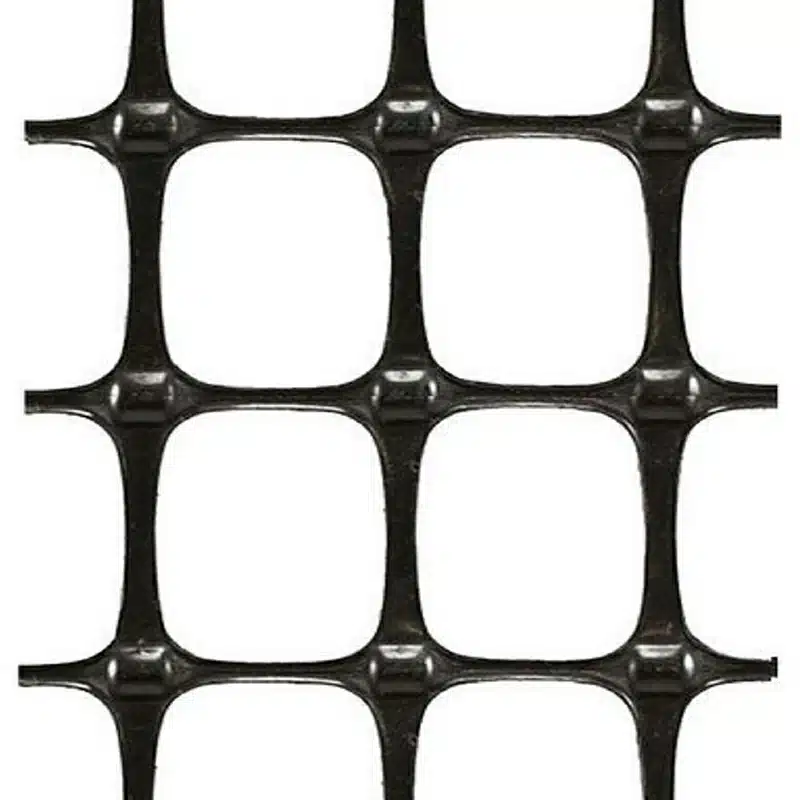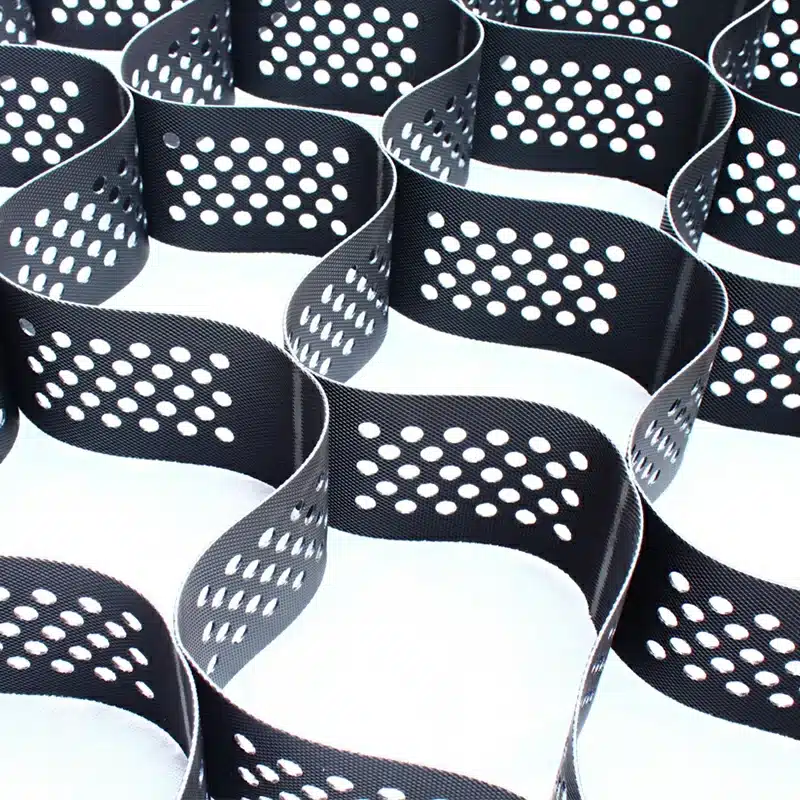+86-159 9860 6917
info@geofantex.com
geofantex@gmail.com
+86-400-8266163-44899
In the world of civil engineering, geosynthetics play a vital role in modern construction and environmental protection. But what exactly is the meaning of “geosynthetic,” and how do these materials function? This article delves into the concept of geosynthetics, provides examples, explains their functions, and highlights the key differences between geotextiles and geosynthetics.

What is the meaning of geosynthetic?
Definition: Geosynthetics are synthetic materials used in geotechnical engineering and construction. They are designed to improve the mechanical and physical properties of soil, rock, and other civil engineering-related materials.
Types of Geosynthetics:
- Geotextiles: Permeable fabrics used to reinforce, filter, protect, or drain soils.
- Geomembranes: Impermeable membranes used primarily for containment and barrier purposes.
- Geogrids: Grids used to reinforce soils and similar materials.
- Geonets: Used for drainage applications.
- Geocells: Three-dimensional honeycomb-like structures filled with soil to reinforce slopes and other surfaces.
- Geocomposites: Combination of different geosynthetics to meet specific project needs.
- Geofoams: Lightweight blocks of foam used for soil stabilization and insulation.
Applications
- Road Construction: Reinforcement of road bases and sub-bases to improve stability and longevity.
- Erosion Control: Prevention of soil erosion on slopes and embankments.
- Landfills: Lining systems to prevent leachate contamination.
- Water Management: Lining of canals, reservoirs, and ponds to prevent seepage.
- Retaining Structures: Reinforcement of retaining walls and embankments.
- Railway Construction: Stabilization of railway tracks and embankments.
Significance in Civil Engineering
- Durability: Enhances the longevity and durability of civil engineering structures.
- Cost-Effective: Reduces the need for natural materials and lowers construction costs.
- Environmental Benefits: Helps in environmental protection through applications like erosion control and containment of contaminants.
- Versatility: Adaptable to a wide range of soil conditions and construction scenarios.
What is an example of a geosynthetic?
A common example of a geosynthetic material is geotextile. Here’s a breakdown to enhance readability:
Definition: Geotextiles are permeable fabrics used in civil engineering projects.
Material Composition: They are typically made from synthetic polymers such as polyester or polypropylene.
Functions:
- Separation: Prevents the mixing of different soil layers.
- Filtration: Allows water to pass through while retaining soil particles.
- Reinforcement: Provides additional strength to soil structures.
- Protection: Shields other geosynthetic layers or structures from damage.
Applications:
- Road construction to stabilize the soil.
- Erosion control in riverbanks.
- Drainage systems in landfills.
- Reinforcement of retaining walls.

What is the function of geosynthetics?
Geosynthetics are synthetic materials used in civil engineering projects, often for environmental protection and structural improvements. They are made from polymers and include several types like geotextiles, geomembranes, geogrids, and geonets, each serving distinct functions.
Types of Geosynthetics:
- Geotextiles: These are permeable fabrics that filter, reinforce, and separate soils in construction.
- Geomembranes: Impermeable sheets used for containment and barrier functions, such as lining in landfills.
- Geogrids: Used for reinforcement, they help distribute loads in soil stabilization projects.
- Geonets: Used for drainage, allowing for fluid or gas movement while maintaining separation.
Functions of Geosynthetics:
- Soil Stabilization: Geogrids and geotextiles improve soil strength and load-bearing capacity. For example, they are used in road construction to prevent settling or subsidence.
- Drainage: Geonets and geotextiles help manage water flow in retaining walls, preventing water buildup while filtering out soil particles.
- Erosion Control: Geotextiles and geomembranes are used on slopes or embankments to prevent soil erosion by water or wind, especially in riverbank protection.
- Reinforcement: Geogrids and geotextiles reinforce soil and other structures by distributing loads more evenly, which helps increase the lifespan of roads, retaining walls, and embankments.
Sustainability in Engineering:
Geosynthetics contribute to sustainability by reducing the need for natural resources (like aggregates), improving the longevity of structures, and minimizing environmental impacts. For example, using geomembranes in landfills helps contain waste materials, preventing groundwater contamination.
Real-World Examples:
- Road Construction: Geotextiles and geogrids improve the lifespan of road surfaces by reinforcing weak soils underneath.
- Landfill Liners: Geomembranes act as containment barriers to prevent leachate from contaminating groundwater.
- Erosion Control on Slopes: Geotextiles are used to prevent landslides and erosion by stabilizing soil layers.
What is the difference between geotextile and geosynthetic?
Definitions
- Geotextile: Geotextiles are a type of geosynthetic material specifically made from synthetic fibers like polyester or polypropylene, woven or non-woven. Their primary function is to serve as a separation, filtration, or reinforcement layer in civil engineering projects.
- Geosynthetic: Geosynthetics are a broader category that includes a range of polymer-based materials designed for use in civil engineering, environmental protection, and infrastructure applications. Geotextiles, geomembranes, geogrids, and geonets all fall under this larger category.
Functions
- Geotextile Functions: Geotextiles primarily provide separation between different soil layers, improve drainage, and reinforce embankments or roads. They also play a role in filtration, preventing fine soil particles from moving into drainage systems.
- Geosynthetic Functions: Geosynthetics cover a wider range of functions, including containment (geomembranes), reinforcement (geogrids), filtration and drainage (geonets and geotextiles), and erosion control (geosynthetic erosion control materials).
Examples
- Geotextiles: Used in road construction, retaining walls, and railway projects for separation and reinforcement purposes.
- Geosynthetics: Include geomembranes used in landfill liners and geogrids for soil reinforcement in road embankments.
Key Differences
- Scope: Geotextiles are a specific type of geosynthetic, meaning all geotextiles are geosynthetics, but not all geosynthetics are geotextiles.
- Material Variety: Geosynthetics cover a broader range of materials, while geotextiles are primarily focused on fabrics used for specific soil-related functions.
- Functionality: Geosynthetics encompass more diverse roles such as barrier systems, which are not functions typically associated with geotextiles.
In summary, geosynthetics are synthetic materials with various applications in civil engineering and environmental projects. They play a pivotal role in enhancing soil performance, preventing erosion, and providing solutions for complex engineering challenges. Understanding the meaning, examples, functions, and differences between geosynthetics and geotextiles is essential for engineers and professionals in related fields.



Get Free Sample
We’ll respond as soon as possible(within 12 hours)






















